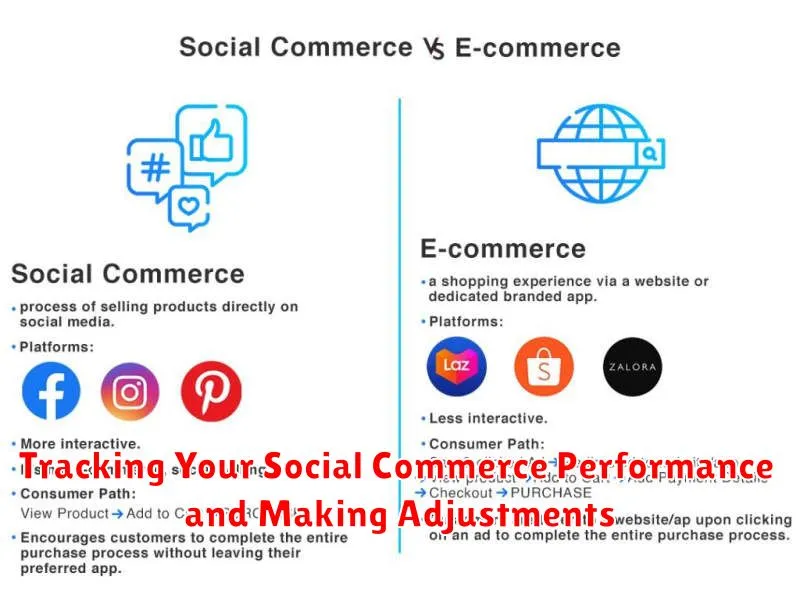In today’s digitally driven marketplace, social commerce has emerged as a powerful force, revolutionizing the way businesses connect with consumers and drive sales. This comprehensive guide delves into the dynamic world of social commerce, providing valuable insights and actionable strategies to harness its full potential. From understanding the core principles of social selling and leveraging popular platforms like Instagram, Facebook, and Pinterest, to exploring the nuances of influencer marketing and navigating the evolving landscape of social commerce trends, this guide equips you with the knowledge and tools necessary to succeed in this rapidly growing space. Unlock the power of social commerce and transform your online presence into a thriving sales engine.
Whether you’re a seasoned e-commerce entrepreneur or just beginning to explore the possibilities of online retail, this guide offers a practical roadmap to navigate the complexities of social commerce. Learn how to effectively integrate social media strategies into your sales funnel, optimize product listings for social platforms, build a loyal community of engaged followers, and measure the return on investment of your social commerce initiatives. Discover how to leverage the power of user-generated content, create compelling social shopping experiences, and stay ahead of the curve in the ever-changing world of social commerce.
Understanding the Basics of Social Commerce
Social commerce is the process of selling products or services directly through social media platforms. It’s more than just advertising; it’s about creating a seamless shopping experience within the social media environment. This allows users to browse, discover, and purchase products without ever leaving the app or website.
Key elements of social commerce include:
- Product discovery on social media feeds
- In-app checkout and payment options
- Customer service interactions within the platform
- User-generated content and reviews influencing purchasing decisions
It leverages the power of social connections and community to drive sales. By building trust and engagement through social media, businesses can create a more personalized and interactive shopping experience.
Understanding these basics is the first step to harnessing the potential of social commerce for your business.
The Benefits of Social Commerce for Businesses
Social commerce offers a wealth of advantages for businesses looking to expand their reach and boost sales. By integrating commerce directly within social media platforms, businesses can tap into a vast and engaged audience.
A key benefit is increased brand visibility. Social media platforms offer a powerful channel to connect with potential customers where they already spend their time. This increased visibility can lead to greater brand awareness and recognition.
Improved customer engagement is another significant advantage. Social commerce facilitates direct interaction with customers, fostering stronger relationships and building brand loyalty. Features like comments, direct messages, and live streams allow for real-time feedback and personalized customer service.
Streamlined purchasing process is a crucial benefit. Social commerce simplifies buying by enabling customers to purchase products directly within the social media platform, eliminating the need to navigate to a separate website. This frictionless experience can significantly increase conversion rates.
Finally, valuable data and insights derived from social commerce interactions provide businesses with a deeper understanding of customer preferences and behaviors. This data can inform marketing strategies and product development, leading to more effective campaigns and improved business outcomes.
Building a Successful Social Commerce Strategy
A successful social commerce strategy requires careful planning and execution. Begin by clearly defining your target audience and understanding their preferences on social media. This knowledge informs platform selection and content creation.
Next, establish clear and measurable objectives. Are you aiming for increased brand awareness, higher conversion rates, or driving more traffic to your website? Defining your goals allows you to track progress and measure success.
Product selection is crucial. Choose products that resonate with your target audience and are well-suited for the social commerce environment. High-quality product images and compelling descriptions are essential for attracting potential buyers.
Finally, customer service is paramount in social commerce. Respond promptly to inquiries and address customer concerns efficiently. Positive customer experiences build trust and encourage repeat purchases, driving long-term success.
Choosing the Right Social Media Platforms for Your Business
Selecting the right social media platforms is crucial for social commerce success. Target audience is the primary consideration. Where do your potential customers spend their time online? Different demographics favor different platforms.
Platform features also play a vital role. Instagram is highly visual, ideal for showcasing products. Pinterest is excellent for driving traffic with shoppable pins. Facebook’s marketplace offers a direct selling environment. Consider which features align with your product offerings and marketing goals.
Resource allocation is another key factor. Managing multiple platforms effectively requires time and resources. Start with one or two platforms and expand as your business grows and resources permit. Focus your efforts where they will have the most significant impact.
Finally, analyze your competitors. Which platforms are they using successfully? Learning from their strategies can provide valuable insights and inform your platform choices.
Creating Engaging Content that Drives Sales

Engaging content is the cornerstone of a successful social commerce strategy. It captures attention, builds brand loyalty, and ultimately, drives sales. Content should be tailored to your specific target audience and the platform you’re using. Consider what resonates with them – is it humor, educational material, behind-the-scenes glimpses, or user-generated content?
Prioritize high-quality visuals. Compelling images and videos significantly enhance engagement. Think professional photography, eye-catching graphics, and short, dynamic video clips. Ensure your visuals are optimized for each platform’s specifications.
Interactive content encourages active participation from your audience. Run polls, quizzes, Q&A sessions, or host live streams to foster a sense of community and gather valuable feedback. Contests and giveaways can also generate excitement and boost brand visibility.
Don’t underestimate the power of storytelling. Craft narratives that connect with your audience on an emotional level. Share customer testimonials, showcase your brand’s values, and highlight the benefits of your products in a relatable way.
Using Social Media Ads to Reach a Wider Audience
Social media advertising offers a powerful way to expand your reach and drive sales. By leveraging targeted ads, you can connect with potential customers who are already interested in products or services similar to yours. This precise targeting minimizes wasted ad spend and maximizes your return on investment.
Key advantages of social media ads include detailed audience segmentation, allowing you to refine your targeting based on demographics, interests, behaviors, and even location. Real-time analytics provide immediate feedback on ad performance, enabling you to adjust campaigns for optimal results. Various ad formats, from image and video ads to carousel and collection ads, offer flexibility in showcasing your products or services.
Platforms like Facebook, Instagram, and Pinterest provide robust advertising platforms with user-friendly interfaces. You can set specific campaign objectives, such as brand awareness, website traffic, or conversions, and tailor your ads accordingly.
Leveraging Influencer Marketing to Promote Your Products
Influencer marketing is a powerful strategy for social commerce, allowing businesses to tap into established audiences and build trust through credible endorsements. By partnering with influencers who align with your brand and target demographic, you can effectively reach potential customers and drive sales.
Selecting the Right Influencers is crucial. Consider factors like audience demographics, engagement rates, and content alignment with your brand. Micro-influencers, with their smaller but highly engaged audiences, can be particularly effective for niche products.
Campaign Goals and Measurement are essential for successful influencer marketing. Clearly define your objectives, whether it’s brand awareness, website traffic, or direct sales. Establish key performance indicators (KPIs) to track progress and measure the return on investment (ROI).
Authenticity and Transparency are paramount. Ensure that influencer partnerships feel genuine and disclosures are clear. Consumers value transparency and are more likely to trust recommendations that are authentic and unbiased.
Tracking Your Social Commerce Performance and Making Adjustments

Tracking your social commerce performance is crucial for understanding what’s working and what needs improvement. It allows you to make data-driven decisions to optimize your strategy and maximize your return on investment.
Key metrics to monitor include conversion rates, click-through rates, engagement (likes, comments, shares), reach, and revenue generated directly from social commerce activities. Utilize platform-specific analytics dashboards and consider third-party social listening tools for a comprehensive overview.
Analyzing this data will reveal trends and patterns. For example, low conversion rates might indicate issues with product descriptions or checkout processes. Poor engagement could suggest a need for more compelling content. By identifying these areas for improvement, you can make necessary adjustments.
Regularly review your social commerce performance. A consistent schedule allows for proactive adjustments based on real-time data. This iterative process of tracking, analyzing, and adjusting is essential for long-term success in social commerce.
Staying Up-to-Date with the Latest Social Commerce Trends
The social commerce landscape is constantly evolving. Staying informed about the latest trends is crucial for maintaining a competitive edge and maximizing your sales potential. Continuous learning and adaptation are key to success in this dynamic environment.
Key strategies for staying current include:
- Following industry experts and thought leaders on social media.
- Subscribing to relevant newsletters and publications.
- Attending industry conferences and webinars.
- Regularly analyzing your competitors’ social commerce strategies.
By actively monitoring these resources, you can identify emerging trends like the increasing use of short-form video, the rise of live shopping, and the growing importance of augmented reality experiences. Understanding these developments allows you to proactively adapt your strategies and capitalize on new opportunities.

